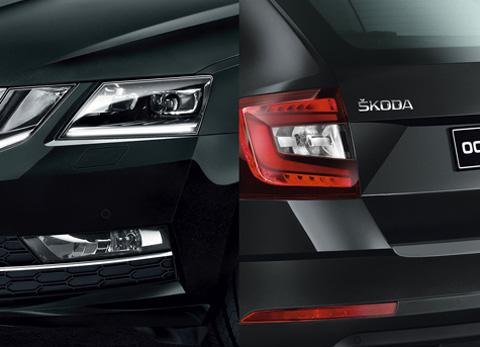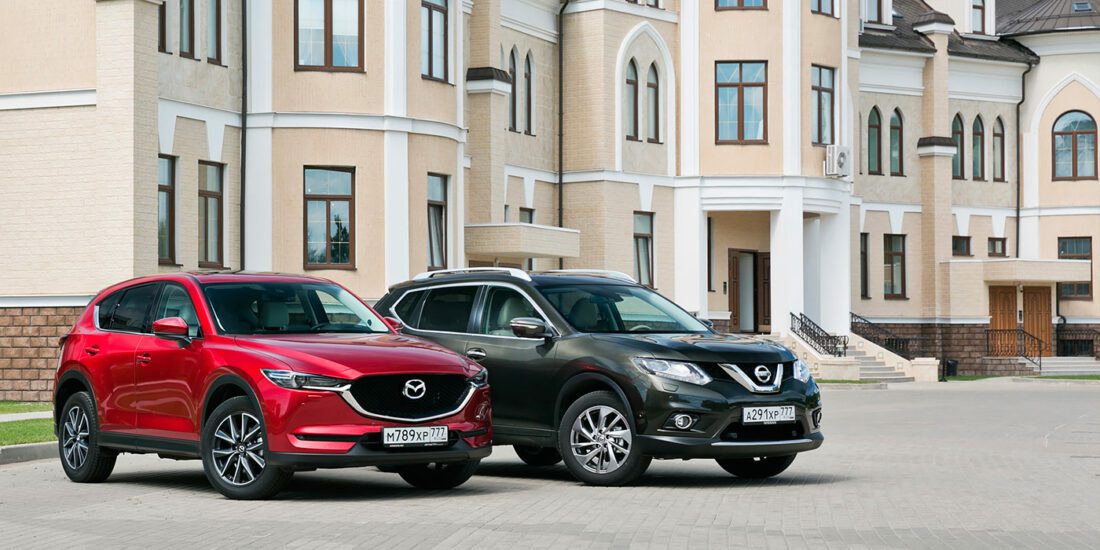
Test drive Mazda CX-5 vs Nissan X-Trail
Who is better prepared for off-roading, why Mazda is faster than the X-Trail, where the trunk is larger and more convenient, how to choose the right trim and which crossover is quieter
The crisis and ERA-GLONASS have reduced the variety of types of the Russian automotive market. A crossover today is an SUV, a minivan and something like a fashion car. Therefore, buyers prefer a more powerful engine, a richer package and a bigger car - like the Nissan X-Trail and the newest Mazda CX-5.
The mid-size X-Trail entered the assembly line of the plant in St. Petersburg in 2015 and quickly won the title of the most popular Japanese brand crossover in Russia. A year later, he lost to the localized Qashqai, but then the gap was only 800-plus cars. This year, the X-Trail is again ahead, still a far cry from the best-selling Toyota RAV4 and still more popular than the CX-5.
There is no one to compete with the CX-5 within the model range: this is the only crossover of the brand in Russia - the more compact Mazda CX-3 has not appeared in our country. It is also the driving force behind Mazda's sales, which is not surprising given the popularity of such vehicles. It is unlikely that the new CX-5 will be in less demand - the car has slightly risen in price, but at the same time acquired in equipment and comfort.
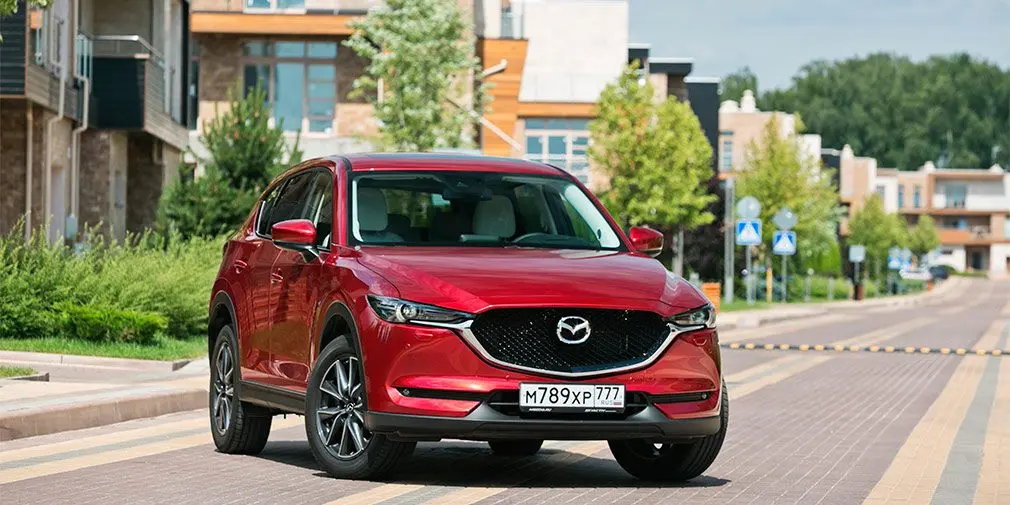
Nissan X-Trail tries to be bigger than it really is: a bumper swollen with conceit, a billowing hood, massive stern. The roomy interior dominates the silhouette. It is 5 cm longer than the CX-9, 3,5 cm taller, but less than 2 cm in width. At the same time, the difference in the wheelbase is only 5 mm in favor of the Nissan. Mazda, on the contrary, tries to be smaller, details are drawn thinner, more elegant. It has a long hood, lean stern, and a heavily sloped hatchback pillar. And the aggressive appearance of a sports car - the CX-5 squints evilly in the rear-view mirror and rolls over with a concave bumper-bucket.
Crossover interiors are similar with thick and angular air duct frames, as well as an abundance of soft plastic. The front panel of "Mazda" is more compact and lower than the Nissan "cliff" and at the same time flaunts real seams with stitching. Small instruments, a steering wheel with thin spokes - in the X-Trail everything, on the contrary, is weighty, big. The decorative inserts are equally lurid - like carbon fiber from Nissan, like wood from Mazda.
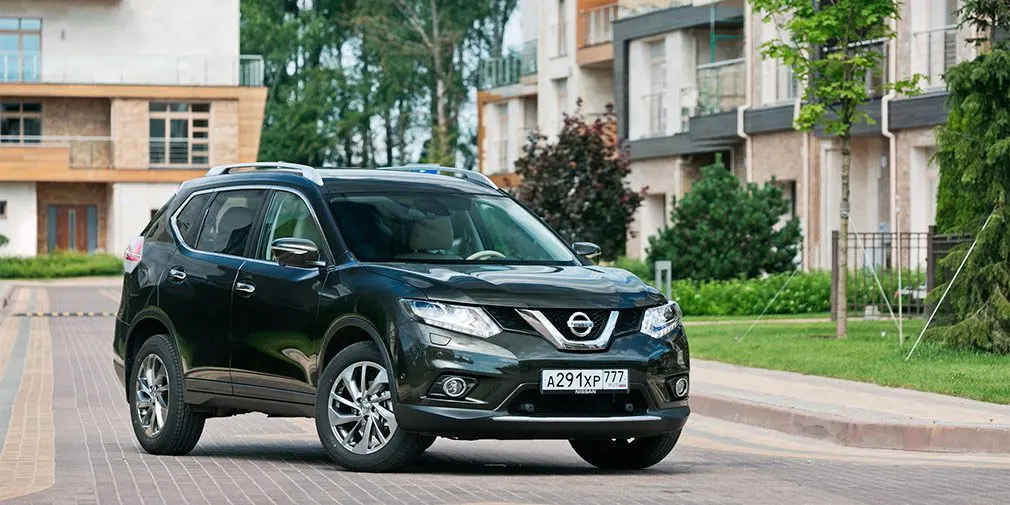
The multimedia buttons and knobs on the Nissan console may look a little old-fashioned, but the navigation and music controls are comfortable and easy to get used to. The CX-5 console seems empty: mentally I want to insert a radio tape recorder here. Push-button minimalism reaches strange - Mazda does not have a central locking key, only flags on the door handles.
The slot for the CD is also unusually located - it is hidden above the air ducts. The CX-5 multimedia system is controlled by a puck, as in Audi and BMW, and is located in the center tunnel - in the same place as the volume knob. The display of the CX-5 with a special coating is less glare, and the "carousel" menu is clearer and simpler than the Nissan one. At the same time, the functionality of Mazda multimedia is poorer. X-Trail maps are more detailed, there is traffic information, and there is even Facebook among the applications. Mazda takes sound - more precisely, ten speakers of the Bose audio system. Here she is out of competition.
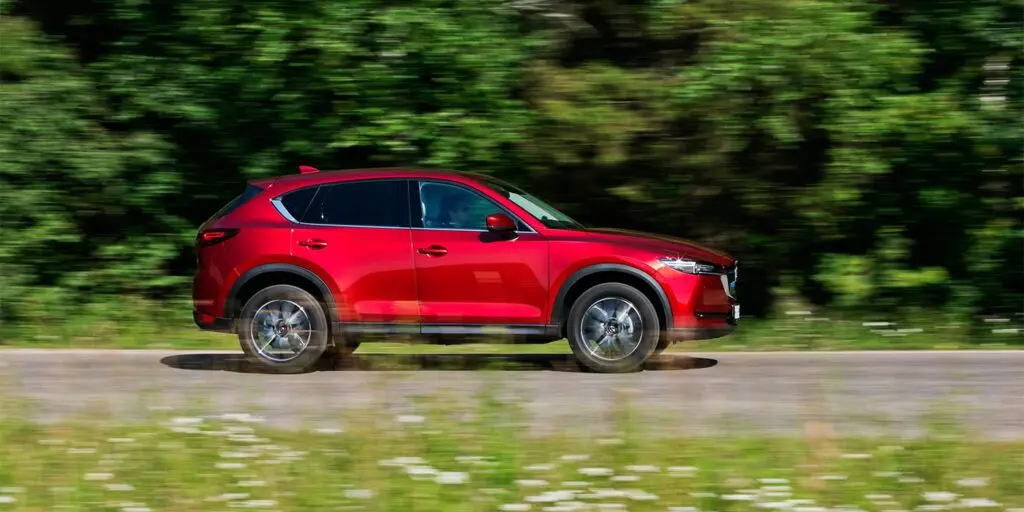
The CX-5 used to be scolded for its asceticism, but now it has all the power windows with automatic mode and heated steering wheel and brush rest zones. The only strange thing is that with the change of generations, the USB connectors from the niche under the console have moved into the compartment between the seats. The X-Trail has only the driver's power window made automatic, but it has cooled cup holders, and the windshield is heated over the entire plane.
Both cars are able to automatically switch the long-range to the near, monitor the "dead zones" and markings. However, the road sign recognition system in X-Trail is disabled, as it did not work correctly in Russia. In the war of options, the head-up display is pitted against the parking assistant and the surround-view cameras. Moreover, the rear is equipped with a washer and blower. These options and a smaller turning radius make the Nissan easy to maneuver in traffic. In turn, Mazda has better forward visibility due to thin struts and a large gap between them and the mirrors.

The front seats of the CX-5 are more ornate than Nissan's. They are sporty tough, but free in the hips - the pillow has become flatter in comparison with the previous generation crossover. The bolsters on the cushion of the Nissan chair are more pronounced, but this is still a family crossover. A lot of big phrases have been said about Nissan seats: "zero gravity", "NASA research." They are extremely convenient and without marketing tips - the driver gets less tired on a long journey.
In terms of equipping the second row, Mazda caught up with the X-Trail - additional air ducts, heated seats, adjustable backrest tilt. And in some ways it has overtaken - for example, USB-sockets are built into the armrest compartment. Headroom is still ample, despite the lowered roofline and slightly increased headroom between the knees and seatbacks.
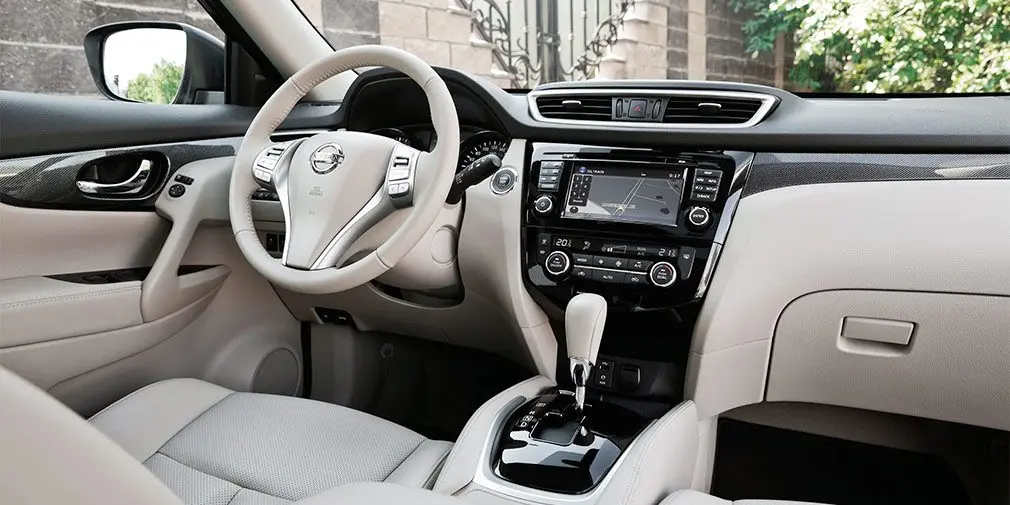
Rear passengers will still choose the X-Trail, which is more spacious than the Mazda and more hospitable due to wider doorways. And the backrests of the sofa are adjustable in a wider range. The width of the cabin in the shoulders allows three people to sit with relative comfort. Passengers of the Nissan crossover sit higher, see further. Wide windows and a panoramic roof add "air", while in Mazda the sunroof is very tiny.
Mazda's stated boot volume of 506 liters is too optimistic a figure. So many climbs up to the level at which the seat belts are attached. With the traditional measurement to the curtain, 477 liters are obtained versus 497 liters for the X-Trail. Mazda's trunk is deeper, the loading height is lower, and the curtain rolls up with the door rising - an elegant solution. With the backrests folded down, the CX-5 has 1620 liters versus 1585 for the X-Trail. Both cars have a foldable center section, but Nissan is better sharpened for transporting luggage. Part of the floor section turns into a shelf, the other part divides the trunk across. The shutter is removed and hides in a special compartment. The rear seats can be moved close to the front ones, freeing up additional space.
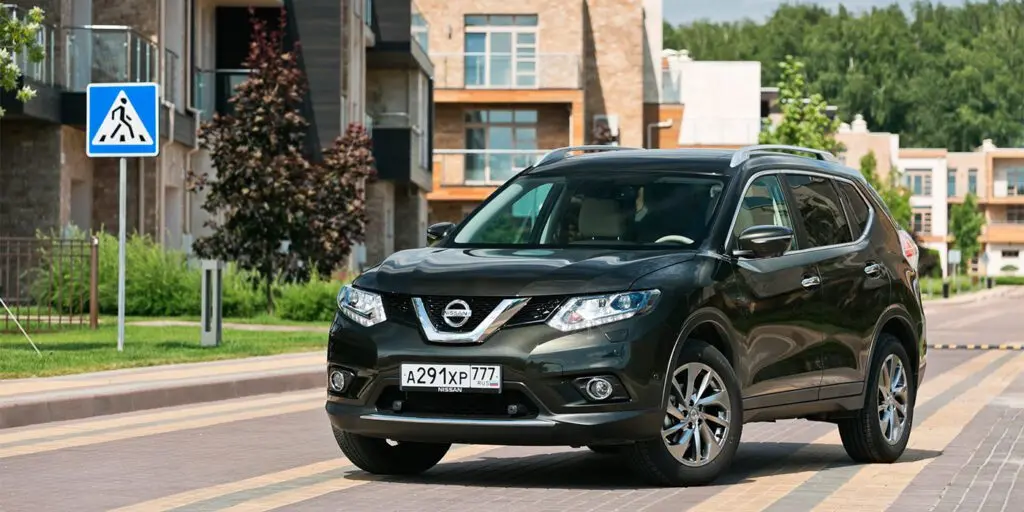
Mazda engineers' love of fitness is common knowledge, but the new CX-5 is not like the loud and hard cars we're used to. He even chose to gain weight and lose a little in dynamics in order to become quieter. The soundproofing of the cabin is excellent here - the engine is heard only during acceleration. The smoothness of the ride is also surprising - the crossover has become noticeably softer, even on 19-inch wheels. There is still good feedback on the steering wheel, but now the car follows it less sharply.
The X-Trail accelerates louder, but also passes bumps louder. The rims are 18-inch, and the suspension is tighter and stiffer. It allows you to pass broken sections at speed, but at the same time it broadcasts little things more and marks sharp joints. Steering effort is greater than Mazda's, but more artificial. "Nissan" also reacts to the shaking of the steering wheel with a slight laziness. CX-5 provokes to fly into a turn at speed - the G-Vectoring system, imperceptibly throwing up the "gas", loads the front wheels, and the connected rear axle additionally turns the car. The X-Trail starts to slip early, including due to the tires, and the non-switchable stabilization does everything to make the exit from the corner as safe as possible.

The CX-5 is lighter, it has a more powerful engine (194 hp and 257 Nm) and an agile 6-speed "automatic". It is not surprising that it is one and a half seconds faster in acceleration to 100 km per hour. And he wants to seem even faster - in Sport mode, the response to the gas is sharper, the “automatic” stubbornly keeps the higher gears. The X-Trail with a motor of the same size (171 hp and 233 Nm) is the exact opposite: it readily responds to gas, but the variator makes acceleration as smooth as possible. There is no sports mode here, but there is an Eco button, which is important, given the higher consumption than the CX-5. The brakes are also smoothly tuned, but grip confidently. For the passenger-oriented Nissan, these characteristics are better suited. Mazda CX-5 is a car about driving ambitions.
On the one hand, the X-Trail is a classic crossover with a rear axle connected via a multi-plate clutch. Plus a variator that does not like long slippage. On the other hand, the X-Trail is well equipped for driving off the asphalt - ground clearance 210 mm, downhill assist. The Lock mode of the all-wheel drive system does not rigidly lock the clutch, but allows the thrust to be distributed equally between the axles.
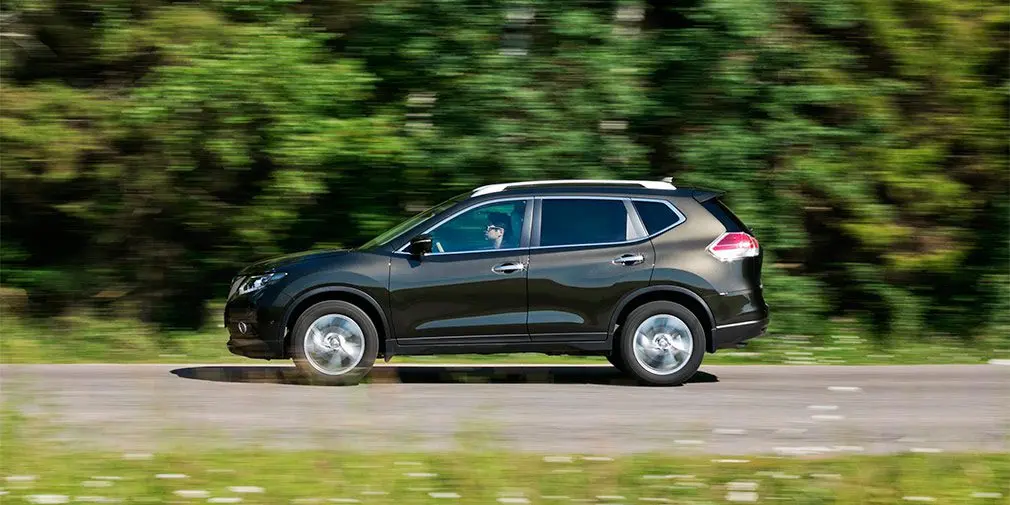
There are crossovers in the segment with a more impressive off-road arsenal, but compared to Mazda, the X-Trail has fewer restrictions on exiting the asphalt. The CX-5's ground clearance is less, the geometry is worse, and the all-wheel drive system is devoid of any special off-road modes. At the same time, the arches of the Mazda are also protected from stones by plastic linings, and the thresholds are even better protected from dirt than in the Nissan.
The X-Trail with a top-end 2,5 engine can be ordered even in a very simple XE + configuration for $ 21, and there are seven equipment options in total. For the most expensive they ask for $ 616. Mazda with the same engine size is offered in two trim levels: "empty" and "thick". The first - Active with a fabric interior, seats with mechanical adjustments and 27-inch wheels will cost a solid amount - $ 195. The second - Supreme for a little over 17 million is equipped to the maximum, but you will have to pay extra for heated steering wheel and brush zones, a complex of driver assistance systems, an electric tailgate, a sunroof, a projection screen and navigation. As a result, the CX-24 is in a similar respect more expensive than the X-Trail, despite the fact that Mazda does not have some of the options available for the Nissan, and that, in turn, has some items from the CX-149 equipment.
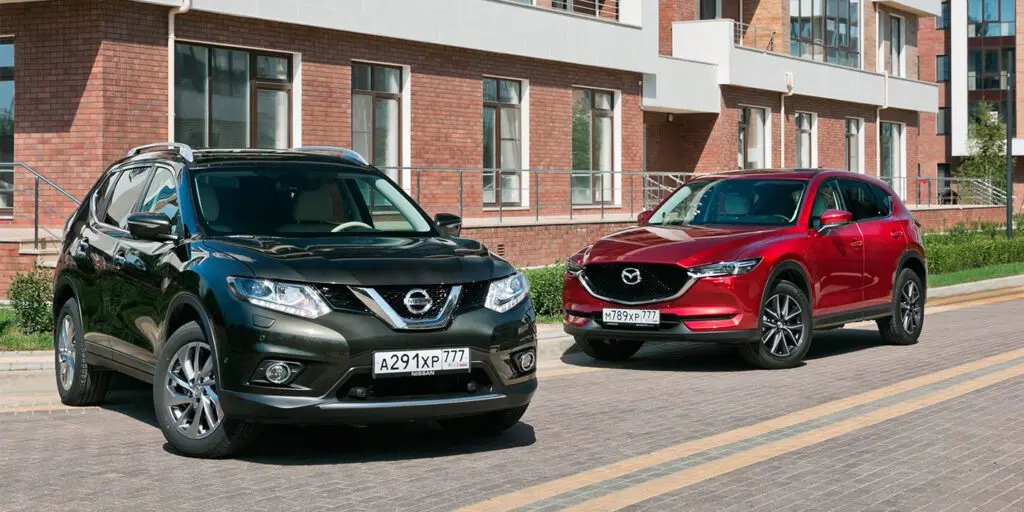
In the two years that separate the Nissan X-Trail and Mazda CX-5, the rules of the game in the crossover segment have changed: interiors have become more luxurious and quieter, suspensions are more comfortable, and equipment lists are longer. Therefore, many mass manufacturers, including Mazda, suddenly started talking about premium. The CX-5 is still focused on sports, the X-Trail is still focused on family travel, but overall, these cars have more in common. And the rapprochement will continue: Nissan has already made the next move in this direction - changed the suspension settings of the updated X-Trail, decorated the interior with seams with stitching and even put the steering wheel almost like a GT-R supercar.
| A type | Crossover | Crossover |
| Dimensions: length / width / height, mm | 4550/1840/1675 | 4640/1820/1710 |
| Wheelbase, mm | 2700 | 2705 |
| Ground clearance, mm | 193 | 210 |
| Cargo space, l | 477-1620 | 497-1585 |
| Curb weight, kg | 1565 | 1626 |
| Gross vehicle weight, kg | 2143 | 2070 |
| engine's type | Gasoline 4-cylinder | Gasoline 4-cylinder |
| Working volume, cubic meters cm | 2488 | 2488 |
| Max. power, h.p. (at rpm) | 194/6000 | 171/6000 |
| Max. cool. moment, Nm (at rpm) | 257/4000 | 233/4000 |
| Drive type, transmission | Full, 6АКП | Full, 6АКП |
| Max. speed km / h | 194 | 190 |
| Acceleration from 0 to 100 km / h, s | 9 | 10,5 |
| Fuel consumption, l / 100 km | 7,2 | 8,3 |
| Price from, $. | 24 149 | 21 616 |
The editors would like to thank Villagio Estate and the administration of the Park Avenue cottage community for their help in organizing the shooting.
